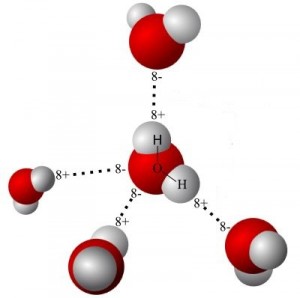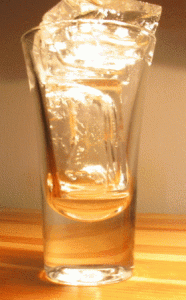
The transition from ice to water to steam. What happens?
A block of ice has a temperature well below freezing and is warmed gradually. It reaches above the boiling point. What transitions occur along the way? What are the processes?
Transition: Solid to Liquid
At first, the heat supplied simply increases the temperature of the ice. The temperature of the surface is somewhat warmer than the ice inside. It takes time for heat to penetrate. Eventually, the outer layer of the ice reaches the melting point. The outside ice melts first—then the inner ice.

During melting, the heat energy is spent breaking the stiff hydrogen bonds. None of it is spent to raise the temperature. If the heating process is slow enough, equilibrium is maintained. If equilibrium is maintained, the process is adiabatic. When all the ice is water, the temperature of the liquid starts to rise.
Transition: Liquid to Vapor
Liquid water also forms hydrogen bonds. They readily break and re-form with other molecules. Water molecules remain close to one another, but flow freely. As the temperature rises, additional heat breaks the hydrogen bonds entirely. The molecules of water separate. This is boiling.
During the boiling process, water’s temperature does not rise until it is all vapor or steam. If additional heat is added, the temperature of the vapor rises.

Non-Equilibrium Heating
Note that if heating of the ice occurs rapidly, equilibrium is not maintained. The outer ice melts to water and the temperature rises before all the ice is melted. In fact, if the heating is sufficiently rapid, some of the liquid may boil before all the ice is melted.
And yet… and yet… There is a so-called triple point at which all three forms of water—solid, liquid, and vapor—co-exist. See the references below to learn more about this.
You may also enjoy: Natural Snow Removal – How?
References:
- NASA: Heat Transfer
- DOE: Newton – Ask a Scientist: Heat Flow at Equilibrium
- Virginia Tech – Laboratory for Scientific Visual Analysis: Triple Point
